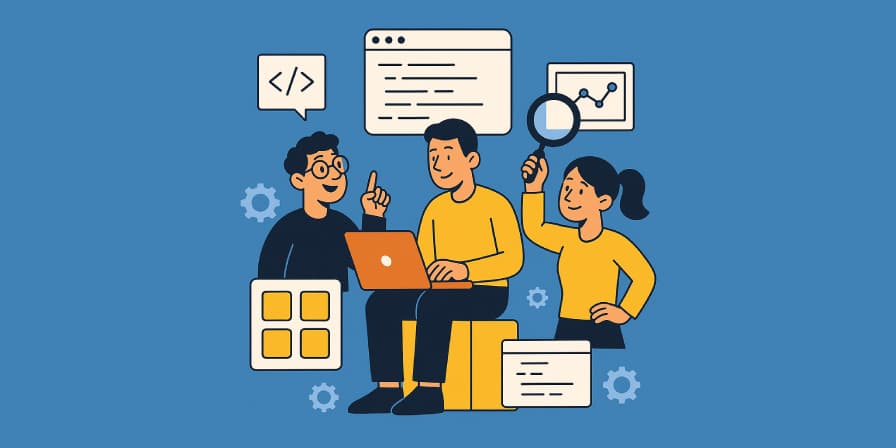Beyond Reading Code: How Moldable Development and Glamorous Toolkit Are Revolutionizing Software Engineering

In the ever-evolving landscape of software engineering, a paradigm shift is underway—one that challenges the traditional norms of code comprehension and system analysis. At the forefront of this transformation is Moldable Development, a methodology that emphasizes the creation of custom tools tailored to specific development problems. Pioneered by Dr. Tudor Gîrba, this approach seeks to make software systems more explainable and navigable, thereby enhancing developer productivity and decision-making.
Understanding Moldable Development
Moldable Development is predicated on a simple yet profound insight: software is inherently shapeless, and to reason about it effectively, developers need tools that provide meaningful representations of the system's components. Traditional development environments often offer generic tools that may not align with the unique contexts of different projects. Moldable Development addresses this gap by advocating for the construction of contextual micro-tools—customized utilities designed to illuminate specific aspects of a codebase.
This methodology transforms the development process into a more interactive and exploratory endeavor. Instead of relying solely on reading and interpreting code, developers can leverage these bespoke tools to visualize, query, and manipulate system components in ways that align with their current objectives. This not only accelerates comprehension but also facilitates more informed decision-making throughout the software development lifecycle.
The Role of Glamorous Toolkit
Central to the practice of Moldable Development is the Glamorous Toolkit (GT), an open-source environment developed by feenk GmbH. GT embodies the principles of Moldable Development by providing a platform where developers can create and integrate custom tools seamlessly. Built on the Pharo programming language, GT offers a rich set of features, including:
-
Visual and Interactive Operators: GT allows for the composition of visual and interactive elements that can be tailored to represent various system components effectively.
-
Contextual Views: Developers can construct views that present information relevant to specific tasks, such as API exploration, data analysis, or system documentation.
-
Live Programming Environment: GT supports live coding and immediate feedback, enabling rapid prototyping and iterative development of custom tools.
By facilitating the creation of thousands of contextual tools, GT empowers developers to mold their development environment to fit the unique contours of their projects, thereby enhancing both efficiency and understanding.
The Imperative for Explainable Systems
In today's complex software ecosystems, the ability to explain and understand system behavior is paramount. Moldable Development addresses this need by making systems more transparent and navigable. By constructing tools that provide clear and context-specific insights into system components, developers can:
-
Accelerate Onboarding: New team members can gain a clearer understanding of the system through tailored visualizations and tools that highlight relevant aspects of the codebase.
-
Enhance Maintenance: Custom tools can simplify the identification and resolution of issues, making maintenance tasks more straightforward.
-
Facilitate Collaboration: Shared tools and visualizations can improve communication among team members by providing common reference points for discussions.
By prioritizing explainability, Moldable Development not only improves individual developer productivity but also enhances overall team effectiveness.
Integrating Moldable Development into Existing Workflows
Adopting Moldable Development requires a shift in mindset and practices. Teams interested in integrating this approach can start by:
-
Identifying Pain Points: Determine areas in the development process where understanding is hindered by inadequate tools or representations.
-
Developing Custom Tools: Use environments like Glamorous Toolkit to create tools that address these specific challenges.
-
Iterative Refinement: Continuously refine and adapt tools based on feedback and evolving project needs.
By embedding Moldable Development practices into their workflows, teams can create more adaptable and responsive development environments.
The Future of Moldable Development
As software systems continue to grow in complexity, the demand for methodologies that enhance comprehension and adaptability will only increase. Moldable Development, with its emphasis on custom tooling and contextual understanding, is well-positioned to meet this demand. Future developments may include:
-
Integration with AI: Leveraging artificial intelligence to suggest or even generate custom tools based on developer behavior and project context.
-
Broader Language Support: Expanding the principles of Moldable Development to a wider range of programming languages and environments.
-
Community-Driven Tool Repositories: Establishing shared repositories of custom tools that can be adapted and extended across projects and organizations.
By continuing to evolve and adapt, Moldable Development has the potential to redefine the way developers interact with and understand complex software systems.
In conclusion, Moldable Development represents a significant advancement in software engineering practices. By focusing on the creation of custom, context-specific tools, it addresses the critical need for explainability and adaptability in modern software development. As the field continues to evolve, embracing methodologies like Moldable Development will be essential for teams seeking to navigate the complexities of contemporary software systems effectively.
Similar Posts
March 30, 2025
Riding the Wave: Understanding the Rise of Vibe Coding in Software Development
The digital landscape is constantly being reshaped, and the way software is created is no exception. A significant shift in this domain has been spark...
Comments
0 comments posted
